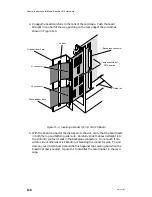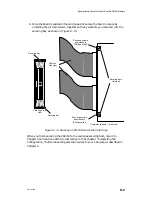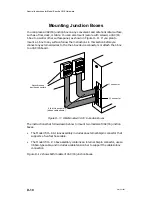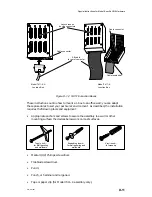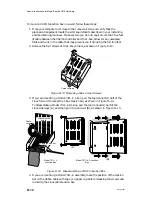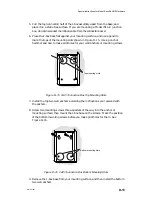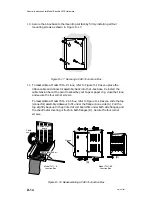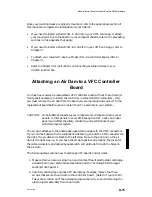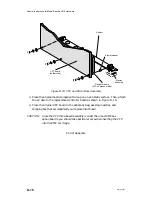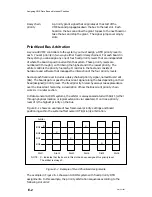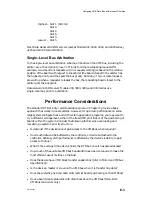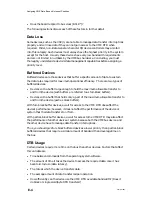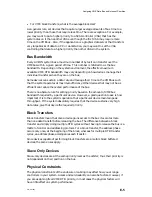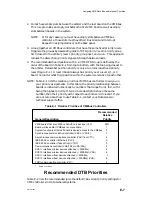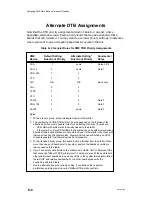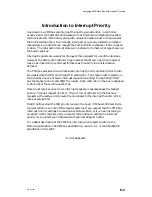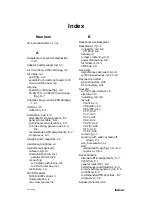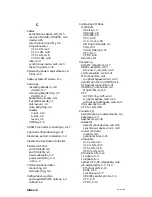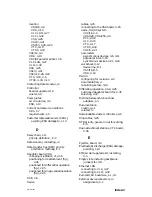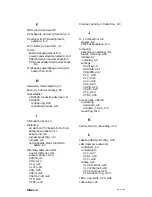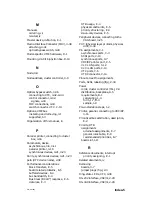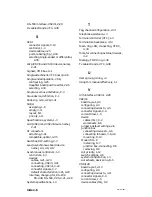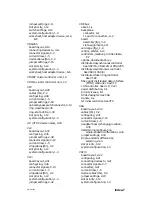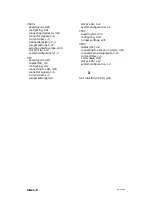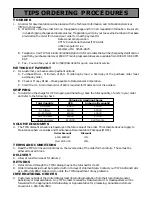
Assigning VME Data Bus and Interrupt Priorities
E-5
014–001867
D
For VME block transfers, what is the average block size?
As a general rule, set devices that require larger average amounts of bus time to a
lower priority than those that require less time. There are exceptions. For example,
you may want to put a higher priority to a SCSI controller (VSA) that has the
system disk on it than another VSA even though the first VSA may require more
time on the VMEbus. Also, if the application is a graphics data server that transfers
very large blocks of data to a PC or workstation, you may want to set the VSA
controlling that data to a higher priority than other VSAs in the system.
Bus Bandwidth
Every AViiON system has a maximum number of bytes it can transfer over the
VMEbus within a given period of time. This number is referred to as the bus
bandwidth. Depending on the system environment, the effective maximum
available VME DTB bandwidth may vary depending on how devices manage their
individual transfers when they are on the bus.
Some devices can sustain a data rate and manage their time on the VMEbus such
that the system operates at maximum efficiency. Other devices that may not be as
efficient can reduce the overall performance of the bus.
There is no absolute rule for setting priority based on the amount of VMEbus
bandwidth required by a particular device. However, a good question to ask is how
important it is to the system’s operation that a particular device maintain peak
throughput. If the system absolutely requires that the device sustains very high
data rates, give that device the required priority.
Block Transfers
Block transfers mean that once a device gains access to the bus it executes more
than one data transfer before releasing the bus. The difference between a block
transfer and simply doing multiple DTB cycles without having to release the bus is a
matter of control and addressing protocol. For a block transfer, the address phase
occurs only once, at the beginning of the block, whereas for multiple DTB transfer
cycles, an address phase accompanies each transfer.
Since devices capable of performing block transfers are also full–block buffered
devices, the same rules apply.
Slave Only Devices
Slave–only devices are at the same priority level as the arbiter; thus their priority is
not dependent on their position on the bus.
Physical Constraints
The physical constraints of the enclosure or cabling may affect how you arrange
controllers in your system. Access and serviceability can also be factors. However, if
you are assigning fixed VME DTB priority, in most cases the physical factors will
have little effect on system performance.
Содержание AViiON 5000 Series
Страница 2: ......
Страница 6: ......
Страница 12: ...Preface x 014 001867 ...
Страница 86: ...Configuring VME Option Boards 2 52 014 001867 ...
Страница 144: ...Connecting External Devices to VME Option Boards 4 44 014 001867 ...
Страница 150: ...VME Backplane Connector Signals and Power Distribution A 6 014 001867 ...
Страница 196: ...Assigning VME Data Bus and Interrupt Priorities E 10 014 001867 ...
Страница 206: ......
Страница 209: ...Cut here and insert in binder spine pocket Setting Up and Installing VMEbus Options in AViiON Systems 014 001867 03 ...
Страница 210: ...Appendix Title ...


